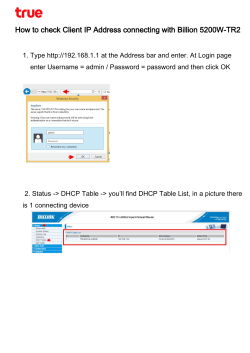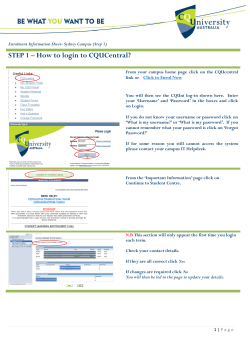
+V.1.0 - iBeacon · Accent Advanced Systems
General Attributes table (GATT) iBKS105 FW VERSION V 2014.11.12.1 Beacon Service UUID:0000fff0-0000-1000-8000-00805f9b34fb Length Characteristic Type Comments Default Value UUID 16 bytes 0xFFF1 Read/write iBeacon Protocol 0x0...00 Major 2 bytes 0xFFF2 Read/write iBeacon Protocol 0x0001 Minor 2 byte 0xFFF3 Read/write iBeacon Protocol 0x0001 CPwr 1 byte 0xFFF4 Read/write iBeacon Protocol 0xC6 2 bytes 0xFFF5 Read/write Value in ms 0x03B6 Tx Power 1 byte 0xFFF6 Read/write Possible values: 00/01/02/03/04/05/06/07 0x07 Password 2 bytes 0xFFF7 Read/write 2 bytes number 0x0000 Config byte 1 byte 0xFFF8 Read/write Possible values: 1A/1B/9A/9B/FF 0x1A State byte 1 byte 0xFFF9 Read Only Possible values: 00/01/02 0x01 Adv. Interval Characteristics meaning The first ten seconds after power up the iBKS105 is a connectable device ready to receive the configuration, this period is called “connectable time window” (CTW) and the iBKS105 is seen by central devices as a custom profile BLE device. If the password is set to 0x0000 (default value) the config app can connect to the iBKS105, it is possible to read and write the values of different characteristics. If there are a password set inside the device(different of 0x0000, 2 bytes) the device is connectable always in the CTW period but you can not read or write any characteristic except password, in this mode, the password characteristic is to write the correct password to unblock “CONFIG MODE”. The state characteristic will show the number “0” when the password is not introduced, “1” when the password is introduced correctly and “2” if the maximum password times wrong has been overcome. When the state characteristic byte shows the value '1' the password characteristic acts as password changer, remember this password, you will need it next time that you want to connect with iBKS105. iBeacon Service UUID: Normally used to define all the beacons that will be used in the same APP. For example all the devices to be used in the “Example Shopping Mall” APP should have the same UUID value. Major: Used to define a group of beacons into an UUID group. For example, all the beacons in the “Example Store 1” in the “Example Shopping Mall” should have the same Major. In this case, every shop should has its own major group value. Minor: Used as lowest level identifier into the Major group of the global UUID group. CPwr: Used to set the Power received in db at 1m. This will be used to define distance range for the app (near, medium, far). Insert the ‘dB’ received at 1m in Hexadecimal. Adv.Int: Defines time between advertising packets (period). Introduce directly the number of miliseconds desired. Tx Power: Introduce one of the possible values: -”0” to set “-30 dB” -”1” to set “-20 dB” -”2” to set “-16 dB” -”3” to set “-12 dB” -”4” to set “-8 dB” -”5” to set “-4 dB” -”6” to set “0 dB” -”7” to set “+4 dB” Password: Set 2 bytes password to protect the beacon against undesired entries. Write the same password to enter in configuration mode if “State Byte is 0”. Config. Byte: This value defines: First Digit: if the beacon is in “developer mode”(9) or not(1) Second Digit: if send iBeacon(A) standard packet or an extra byte to report the battery level(B). *Developer mode avoid the restriction of 30s to enter in configuration mode after power up the device, and also the 30s time out when you are inside the configuration mode. Example: 0x1A -> ibeacon standard protocol with just 30 seconds to connect and 30 seconds to configure it 0x9B ->Beacon always connectable and without time out disconnection. Reporting battery level in extra byte *To update the beacon enter “FF” in this value. It will activate DFU mode to update the beacon through “nRF Master Control Panel” app, from Nordic Semiconductors. State byte: 0: Password incorrect. Enter the correct password to configure the beacon. 1: Password correct. Configuration available. 2: Too many wrong attemps. Wait 3 minutes.
© Copyright 2025















